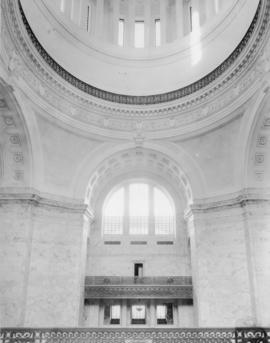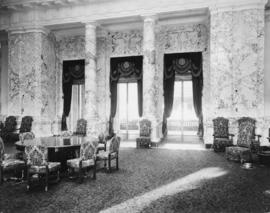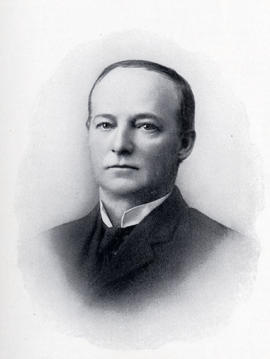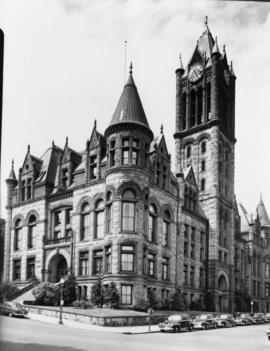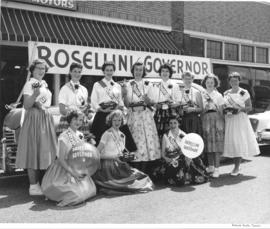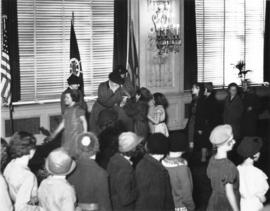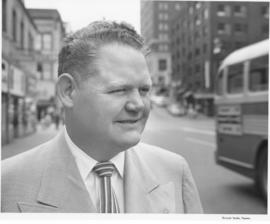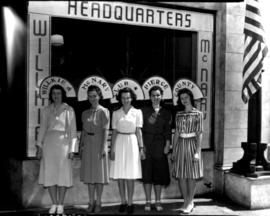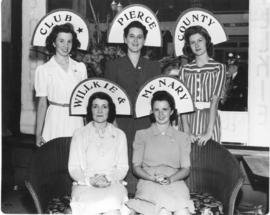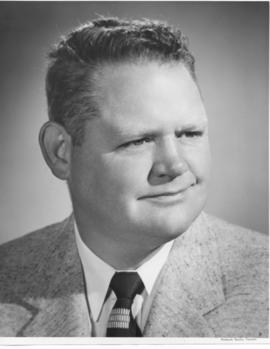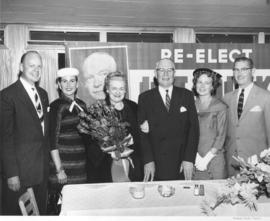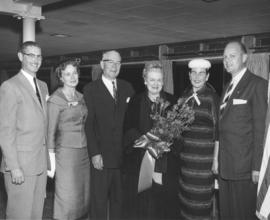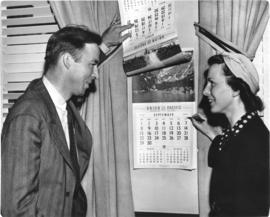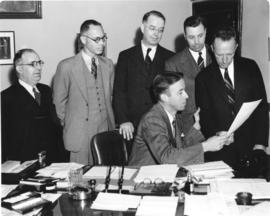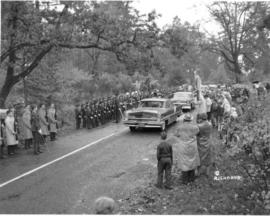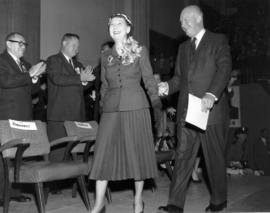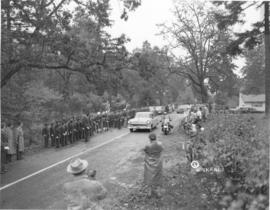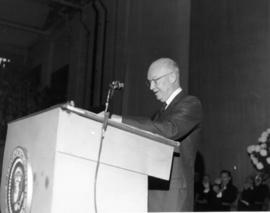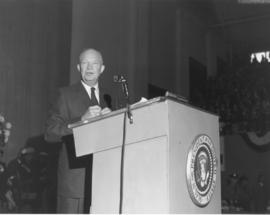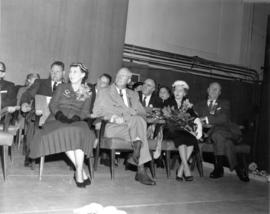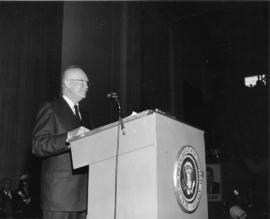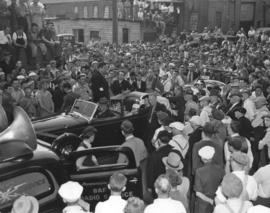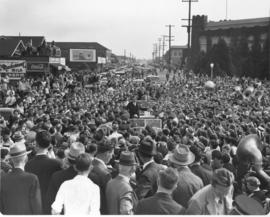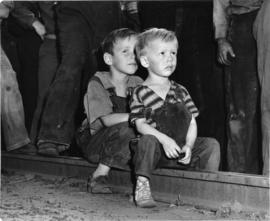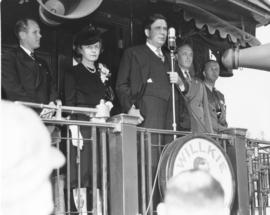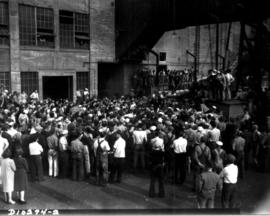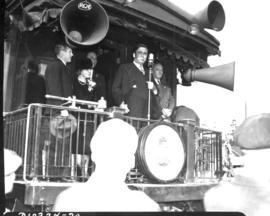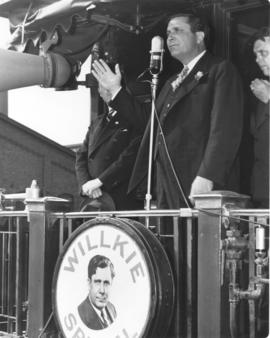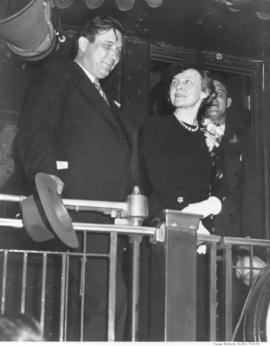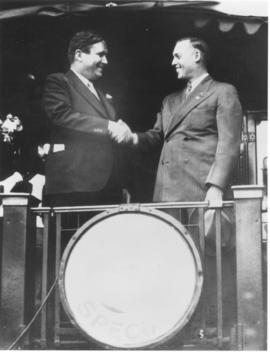- Item
- ca. 1927
Part of Chapin Bowen Photographs
ca. 1927. Legislative Building. The final years of the Legislative Building project, which had begun with the laying of the building's cornerstone in 1922, primarily were concerned with interior work. As this view of the rotunda indicates, marble was extensively used within the Legislative Building as befitting its rich atmosphere. A contract for $850,000 was awarded the Vermont Marble Co. whose Tacoma plant was responsible for the cutting and polishing. A national search for marble setters had to be conducted since this specialized skill was not found locally. The Great Seal of the State of Washington, cast in bronze, was set into the marble stair landing directly under the dome. Until the late 1930's, the Great Seal remained unenclosed and thousands unintentionally trod upon the visage of George Washington, their feet wearing off his nose. Besides the light gray Alaska marble, bronzework was found throughout the rotunda with the railings of the fourth floor balcony (believed to be shown above) incorporating replicas of the state seal. Replicas of Roman firepots used for indirect lighting, also cast in bronze, were located at each corner of the rotunda. (Johnston: Washington's Audacious State Capitol and Its Builders)
